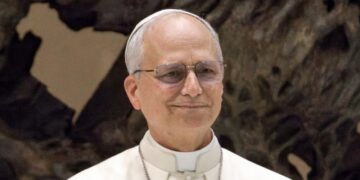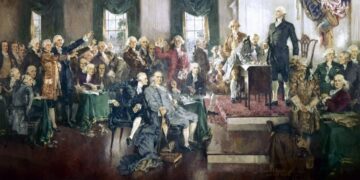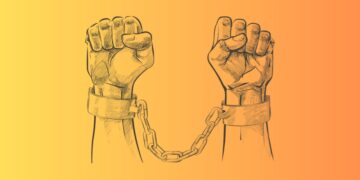Classic TV shows are old series that were released way back when televisions were not common in most households. Television has a rich history going back decades, though you might not know it considering how much of it is – or, more often than not, isn’t – available to stream. It’s worthwhile to travel down memory lane and seek out the shows made before the rise of the streaming era. These are the kind of shows that set the foundation for the TV shows we have today. These shows are intriguing and entertaining, and often are overlooked. Prepare to laugh, cry, and scratch your head with some of the best classic TV shows ever made.
Here are the best classic TV shows to watch right now.
1. The Twilight Zone
The Twilight Zone was the brainchild of Emmy Award-winner Rod Serling, each episode presents a stand-alone story in which characters find themselves dealing with often disturbing or unusual events, an experience described as entering “the Twilight Zone,” often with a surprise ending and a moral. Although predominantly science-fiction, the show’s paranormal and Kafkaesque events leaned the show towards fantasy and horror. The phrase “twilight zone,” inspired by the series, is used to describe surreal experiences.
2. I Love Lucy
The series followed the life of Lucy Ricardo, a young, middle-class housewife living in New York City, who often concocted plans with her best friends, Ethel and Fred Mertz, to appear alongside her bandleader husband, Ricky Ricardo, in his nightclub. Naive and ambitious but lacking the skill, Lucy’s relentless efforts to get into showbiz often lands herself and her husband into trouble.Her neighbours and friends also get entangled in her antics. Throughout the show, Lucy is depicted trying numerous schemes to mingle with and be a part of show business.
3. Twin Peaks
A crime drama mixed with healthy doses of the surreal, this series is about FBI Agent Dale Cooper, who travels to the small logging town of Twin Peaks to solve the murder of seemingly innocent high schooler Laura Palmer. Almost nothing is as it seems, however, and the show’s sometimes eerie visuals, oddball characters and wild dream sequences drive the point home.
4. Freaks and Geeks
Growing up circa 1980, a misfit high-school student and his pals are probably destined to become new media millionaires, but right now they’re stuck in school, where all the girls are a foot taller and bullies terrorize the gym class. Meanwhile, his older sister is flirting with the dope-smoking bad boys, cutting classes and questioning the point of getting good grades.
5. Bewitched
A beautiful witch named Samantha meets and marries a mortal named Darrin Stephens. While Samantha complies with Darrin’s wishes to become a normal suburban housewife, her magical family disapproves of the mixed marriage and frequently interferes in the couple’s lives. Episodes often begin with Darrin becoming the victim of a spell, the effects of which wreak havoc with mortals such as his boss, clients, parents, and neighbors.
By the epilogue, however, Darrin and Samantha most often embrace, having overcome the devious elements that failed to separate them. The witches and their male counterparts, warlocks, are very long-lived; while Samantha appears to be a young woman, many episodes suggest she is actually hundreds of years old. To keep their society secret, witches avoid showing their powers in front of mortals other than Darrin.
Nevertheless, the effects of their spells – and Samantha’s attempts to hide their supernatural origin from mortals – drive the plot of most episodes. Witches and warlocks usually use physical gestures along with their incantations. To perform magic, Samantha often twitches her nose to create a spell. Special visual effects are accompanied by music to highlight such an action.
6. Happy Days
Set in Milwaukee, Wisconsin during the 1950’s, the series revolves around teenager Richie Cunningham and his family: his father, Howard, who owns a hardware store; traditional homemaker and mother, Marion; younger sister Joanie Cunningham; Richie’s older brother Chuck; and high school dropout, greaser, and suave ladies’ man Fonzie, who would eventually become Richie’s best friend and the Cunninghams’ over-the-garage tenant. The earlier episodes revolve around Richie and his friends, Potsie Weber and Ralph Malph, with Fonzie as a secondary character.
However, as the series progressed, Fonzie proved to be a favorite with viewers, and soon more story lines were written to reflect his growing popularity; Winkler eventually received top billing in the opening credits alongside Howard. Fonzie befriended Richie and the Cunningham family, and when Richie left the series for military service, Fonzie became the central figure of the show, with Winkler receiving sole top billing. In later seasons, other characters were introduced including Fonzie’s young cousin, Chachi Arcola, who became a love interest for Joanie Cunningham.
7. The Rockford Files
There have been a lot of sharp-dressed detectives in television and film, but there are none to beat Jim Rockford. Jim Rockford is a private detective solving crimes while living out of a small trailer in Los Angeles. In contrast to most television private eyes, Rockford wears low-budget “off-the-rack” casual clothing and does his best to avoid physical altercations (although he is more than able to hold his own in a fistfight). He rarely carries his Colt Detective Special revolver, for which he has no permit, and prefers to talk his way out of trouble. He works on cold cases, missing persons investigations, and low-budget insurance scams, and repeatedly states that he does not handle “open cases” to avoid trouble with the police.
8. Perry Mason
Perry Mason is a distinguished criminal-defense lawyer practicing in Los Angeles, California, most of whose clients have been wrongly charged with murder. He is ably assisted by his confidential secretary Della Street and by private investigator Paul Drake. The innocent suspect is usually prosecuted by district attorney Hamilton Burger, though the prosecution is handled by a local district attorney when the murder takes place outside Los Angeles. In the early seasons, the police investigation is usually led by homicide detective Lt. Arthur Tragg. Later, other homicide detectives appear with increasing frequency.
9. Murder, She Wrote
The show revolves around the day-to-day life of Jessica Fletcher (formerly MacGill), a widowed and retired English teacher, who becomes a successful mystery writer. Despite fame and fortune, Jessica remains a resident of Cabot Cove, a small coastal community in Maine, and maintains her links with all of her old friends, never letting her success go to her head. The show mostly starts with a preview of the episode’s events, with Jessica stating: “Tonight on Murder, She Wrote…” Jessica invariably proves more perceptive than the official investigators of a case, who are almost always willing to arrest the most likely suspect.
By carefully piecing the clues together and asking astute questions, she fools the authorities into arresting her chosen suspect as ‘real murderer’. Murder occurred with such regularity in her vicinity that the term “Cabot Cove syndrome” was coined to describe the constant appearance of dead bodies in remote locations. Indeed, if Cabot Cove existed in real life, it would top the FBI’s national crime statistics in numerous categories, with some analysis suggesting that the homicide rate in Cabot Cove exceeds even that of the real-life murder capital of the world.
Jessica’s relationship with law enforcement officials varies from place to place. Both sheriffs of Cabot Cove resign themselves to having her meddle in their cases. However, most detectives and police officers do not want her anywhere near their crime scenes, until her accurate deductions convince them to listen to her. Some are happy to have her assistance from the start, often because they are fans of her books. With time, she makes friends in many police departments across the U.S., as well as with a British police officer attached to Scotland Yard.
10. M*A*S*H
Based off of the 1970 Robert Altman movie of the same name, “M*A*S*H” was a situation comedy about key members of the United States Army’s Mobile Army Surgical Hospital working in Korea. Both the movie and series connected with audiences coming out of the grips of the Vietnam War, and took difficult topics (like what we now know as PTSD) and discussed them with a mix of seriousness and levity.
Episodes were both plot- and character-driven, with several narrated by one of the show’s characters as the contents of a letter home. The show’s tone could move from silly to sobering from one episode to the next, with dramatic tension often occurring between the civilian draftees of 4077th who are forced to leave their homes to tend the wounded and dying of the war, and the “regular Army” characters, who tend to represent patriotism and duty.




































































































































































































